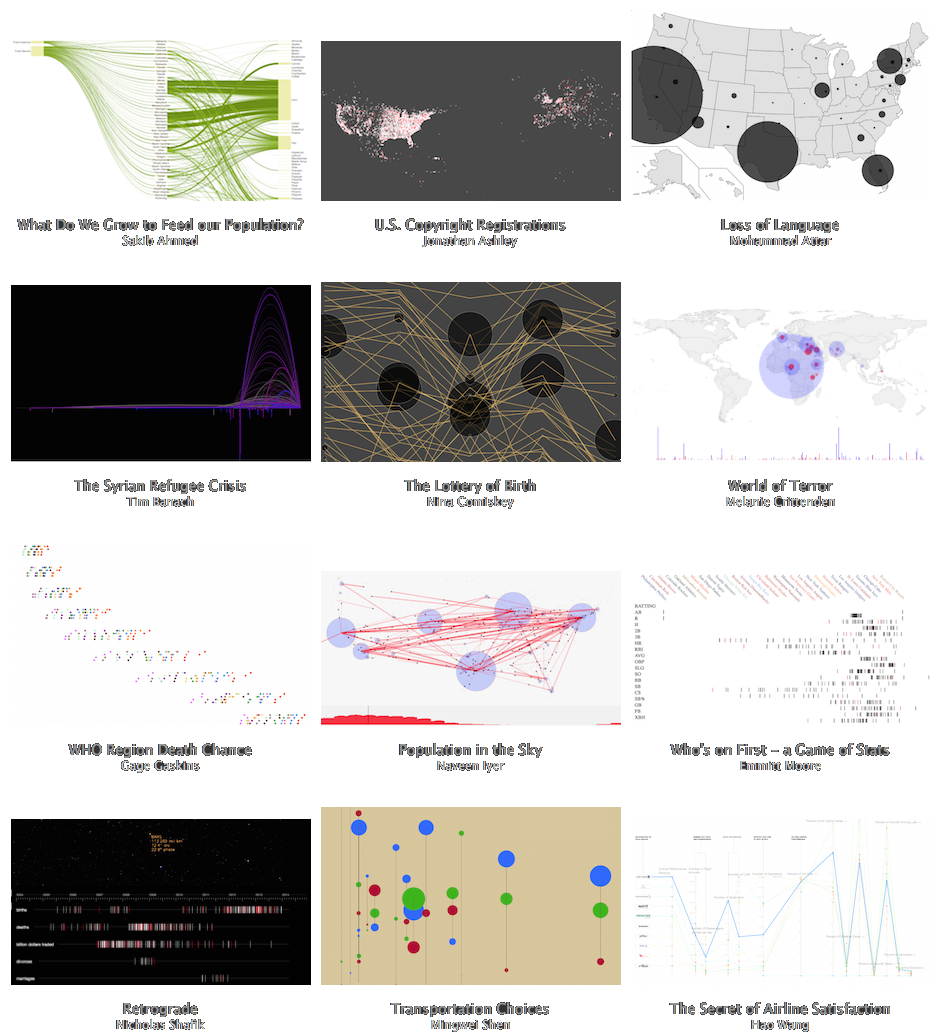data visualization |
|||
| Visualizing Complexity: Constructing Information Space |
|||
|
The Final Project: Referring back to Assignment V, the final project simply continues what we've already begun, and brings it to final fruition. Your visualization should be developing and coming to some sense of refinement, including your access to data that might drive the graphic. As important as the content, however, is the strategy that you're taking to investigate and show it. The entire focus of the semester—from day one—has been on using principles of visual design to generate causal and contextual readings of otherwise difficult information. Your graphics, in both static and dynamic form, should be focusing on some method of doing this. We want these graphics to not only show what's going on, but do so in a manner that increases readability, tells a story, and most importantly increases understanding and insight into the underlying content, concept, and question. Information design is not simply a way to render forward data in a more pleasing way, but is rather—when treated with the proper eye, the proper mind, and the proper hand—an agent for change. Through good design, information gains context and purpose. Visualization cuts through complexity, organizes data into patterns and relationships, exposes the real issues—sometimes the hardest for us to reconcile—and through this we make connections and gain insights that we previously could not see, to make decisions we previously could not make. Information design is about generating access —
Through visualization, we ask a question, gain insight, and then ask a better question. The best visualizations prompt readers to do this for themselves. Your graphics should explore and show real relationships, not just hypotheticals, and be able to explain the concepts, inputs, outputs, relative and/or absolute values, paths, flows, and more, in a way that brings many relationships into play simultaneously, and may show many different variables, contextually, at once. Your graphics will perform what Edward Tufte calls Escaping Flatland.
Your visualizations will also necessarily take a position on the data. Do not be afraid of this.
Submission Requirements For your final visualizations, work appropriately in two forms: 1—an Interactive, Data-Driven Visualization: using HTML, CSS, SVG, D3/Javascript, and perhaps other techniques. This visual will be presented on your computer screen, and can be manipulated by a viewer potentially to highlight, filter, hide and reveal, expose greater detail, reorient data, and possibly input new data that drives the relationships. Use dynamic capabilities as a purposeful - and appropriate - component of your overall Information Space. More than just a graphic, this visualization is a primary tool of discovery. 2—a Static Visualization: rendering the same information and relationships within a single, static, visual field. This can be combined and extracted from your interactive work, or it can be built on it's own. It should show the most important scales and relationships in a way that produces comparison on a single page. Remember that we can readily extract SVG graphics from the dynamic visual to import into Illustrator for editing, composition, and annotation. This graphic should be completed as a PDF poster that can be viewed on screen or printed. Compose your poster using dimensions that you feel are appropriate to the data and visual that you are trying to show. Along with your visualizations, include a narrative that identifies, introduces, and explains your project, its intentions, visual strategies, and sources for your work. Your graphics should all aspire to the best of examples that we've been looking at all semester long.
|
|||
